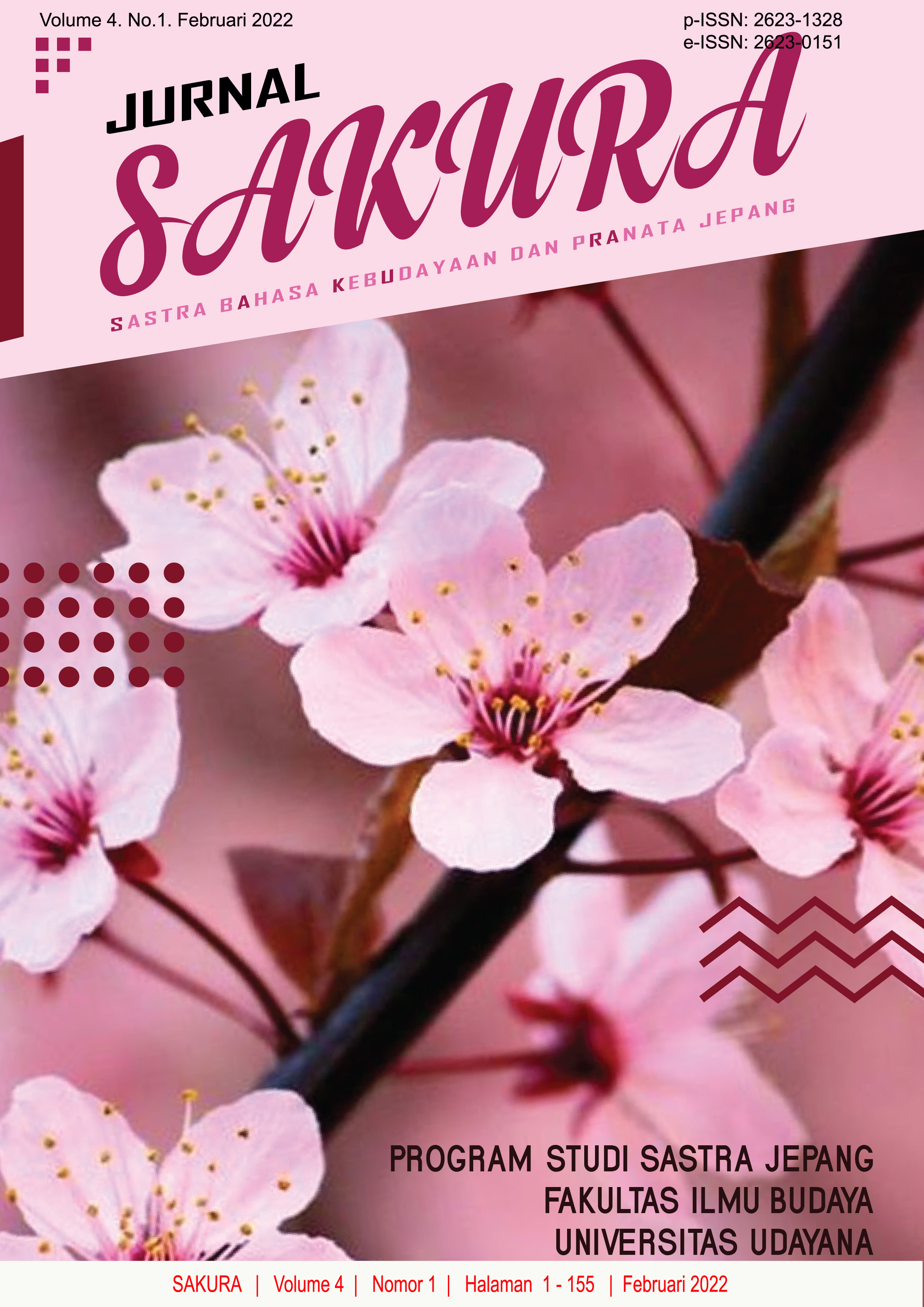Struktur dan Makna Tarian Yosakoi
Abstract
The purpose of this study was to determine the structure and meaning of movements contained in the yosakoi dance. The yosakoi dance is a traditional dance that was first introduced in 1954 in Kochi prefecture. The kochi yosakoi dance was first performed in a summer festival, with the basic dance was called seicho. Seicho yosakoi is danced with the yosakoi naruko odori song and uses a musical instrument called naruko. Besides at Kochi prefecture, yosakoi also has expanded to the Hokkaido area. Yosakoi dance in Hokkaido is known as yosakoi soran. Yosakoi soran was first created by Hasegawa Gaku in 1992. Different from kochi yosakoi, yosakoi soran was first introduced with the traditional song soran bushi. The type of this study was descriptive qualitative. The data source of this study was the movement of yosakoi dancers, namely the Iroha and Yuujou Taiko groups. The method of this study used literature study, observation and interview. The data analysis technique was conducted by analyzing the movement structure and meaning of the seicho and soran bushi dances based on the semiotic concept of Roland Barthes. The results of this study showed that there were 5 movement structures in the seicho yosakoi dance that contained connotative meanings, and there were 14 movement structures in the soran bushi dance. The conclusion from the structure and meaning of these two dances are that they only have connotative meanings. In the seicho dance, it contains the meaning of an invitation for people to come and have fun during the summer at the yosakoi festival. While in soran bushi, this dance has the meaning of describing how fishermen go to sea to catch fish.
Downloads
References
Barthes, Roland. dan Heath, Stephen. 1997. image-music-text. Fontana Press.
Budiman, Kris. 2011. Semiotika Visual Konsep, Isu, dan Problema ikonitisitad. Yogyakarta: Jalasutra.
Endraswara, Suwardi. 2006. Metode, Teori, Teknik Penelitian Kebudayaan: Ideologi, Epistemologi, dan Aplikasi. Yogyakarta: Pustaka Widyatama.
Yunus, Hadi Sabari. 2010. Metodologi Penelitian Wilayah Kontemporer. Yogyakarta: Pustaka Pelajar
Masahiro, Iwai. 2006. Kore ga Kouchi no Yosakoi da! Igosso to Hachikintachi no Atsui Natsu. Tokyo. Japan
Baety, Nur. 2018. “Makna Tari Empat Etnis (Analisis Semiotika Roland Barthes)”. Skripsi. Makassar: Fakultas Dakwah dan Komunikasi, Universitas Islam Negeri Alauddin Makassar.
Fachreza, Muhammad. 2017. “Perbedaan Ciri Khas pada Kochi Yosakoi dan Yosakoi Soran yang Muncul di Era Modern”. Skripsi. Jakarta: Fakultas Sastra, Universitas Darma Persada.
Hidayati, Ratih.K. 2016. “Makna Tari Bajidor Kahot Ditinjau Dari Semiotika Roland Barthes”. PROMEDIA, Vol II No. 2, 2016, h. 64-82.
Kusuma, Putu.K.N. dan Nurhayati, Iis.K. 2017. “Analisis Semiotika Roland Barthes Pada Ritual Otonan Di Bali”. Jurnal Manajemen Komunikasi, Vol I No. 2-2017, h. 195-217.
Waldo, Verlinton. 2010. “Yosakoi Matsuri: Inovasi, Kesinambungan, dan Komersialisasi dalam Budaya”. Depok: Fakultas Ilmu Budaya, Universitas Indonesia.













